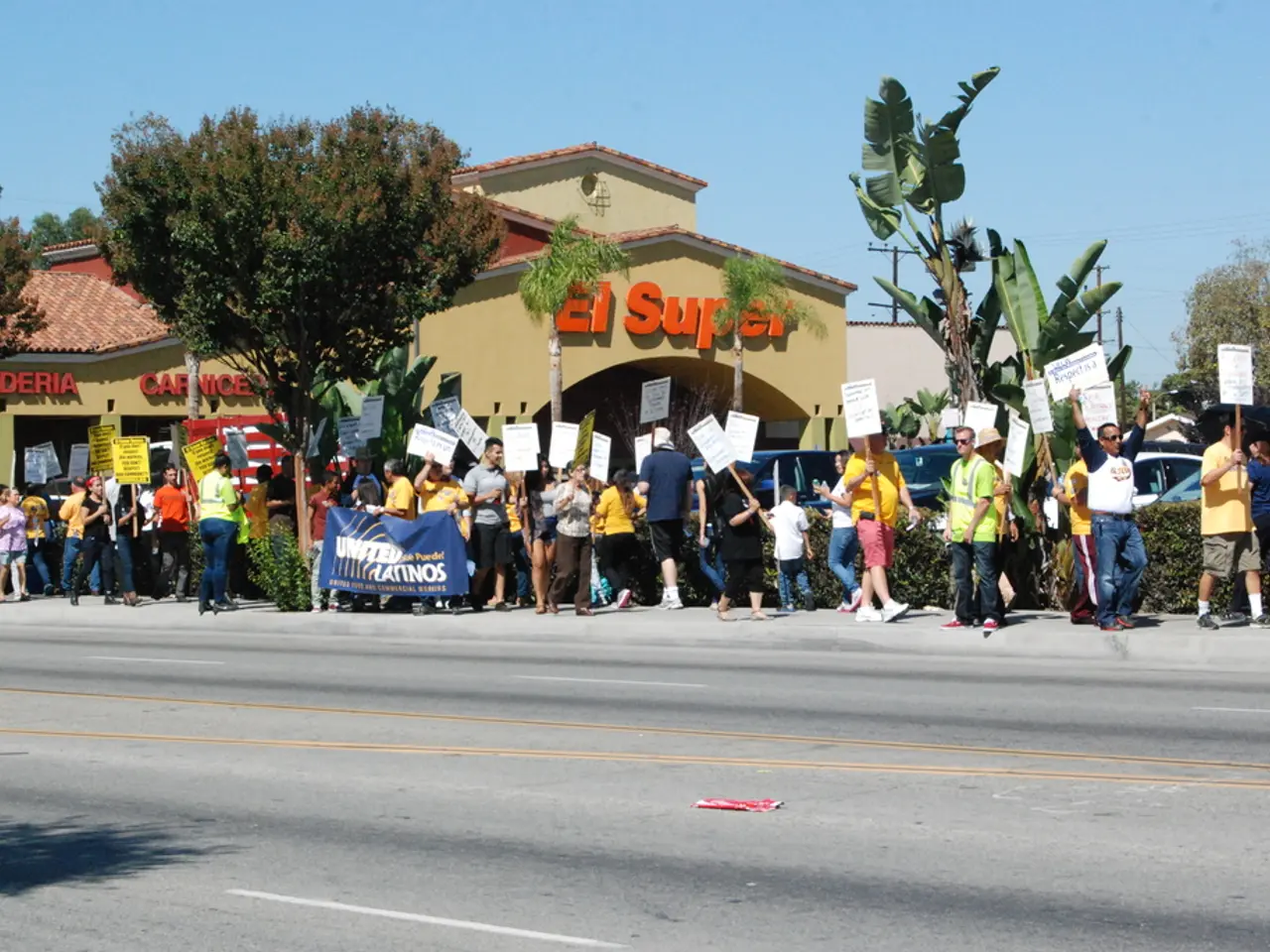Political Atmosphere Tracking: Insights into Germany's Current Political Climate Based on Recent Surveys - Assessment of Political Parties' Popularity: Current Political Climate in Germany
According to the latest Forsa Sunday Poll, the projected seat distribution in the German Bundestag for the main parties is as follows: CDU/CSU (Union) 190 seats, AfD 176 seats, SPD 104 seats, Grüne 84 seats, and Die Linke 76 seats[1]. This projection indicates the CDU/CSU as the largest single bloc but without a majority (316 needed).
The current government, a black-red coalition led by Chancellor Friedrich Merz, consists of the CDU/CSU and SPD. This coalition, which took office in May 2025 following an early election triggered by the collapse of the previous coalition, currently represents around 46.7% of the vote share[1]. This figure is below the majority, reflecting the continuing need for coalition-building.
Significantly, the far-right AfD is rising in popularity, currently polling around 24.4%-26% depending on the source, even topping some recent polls ahead of Merz’s CDU/CSU bloc[1][3]. This rise poses new challenges to the traditional black-red coalition and suggests a more fragmented Bundestag compared to past terms dominated by the Grand Coalition.
The graph does not indicate whether the current government, led by Chancellor Friedrich Merz, would have a majority in the hypothetical election. It also does not specify which parties would win or lose seats in the hypothetical election. However, it does show how the current voting preferences might change the seat distribution based on the Sainte-Laguë/Schepers method, a method used since 2009[4].
The graph is updated weekly with new data for the Sunday question and is available on the website wahlrecht.de, which collates and displays various election polls[5]. If the remainder is exactly 0.5, a decision is made by lot. The seat distribution calculation divides the number of second votes cast by the total number of seats to be distributed[4]. The SSW's mandate is not included in the graph's calculation, as it is exempt from the threshold clause[4].
The graph does not mention any specific policies or issues that might be influencing voting preferences. It merely reflects the current political mood in Germany since the 2021 federal election. The graph below displays the current voting preferences of Germans for various parties.
[1] Forsa Sunday Poll [2] BBC News [3] Deutsche Welle [4] Wahlrecht.de [5] Wahlrecht.de
- The rising popularity of the AfD, as seen in the Forsa Sunday Poll, could potentially impact the community policy and general news discourse, given its extreme right-wing stance on certain issues.
- As the political landscape shifts towards a more fragmented Bundestag, understanding policy-and-legislation, including employment policy, becomes increasingly important for all major parties, such as CDU/CSU, AfD, SPD, Grüne, and Die Linke, especially in the context of coalition-building and potential changes in the German Bundestag.




